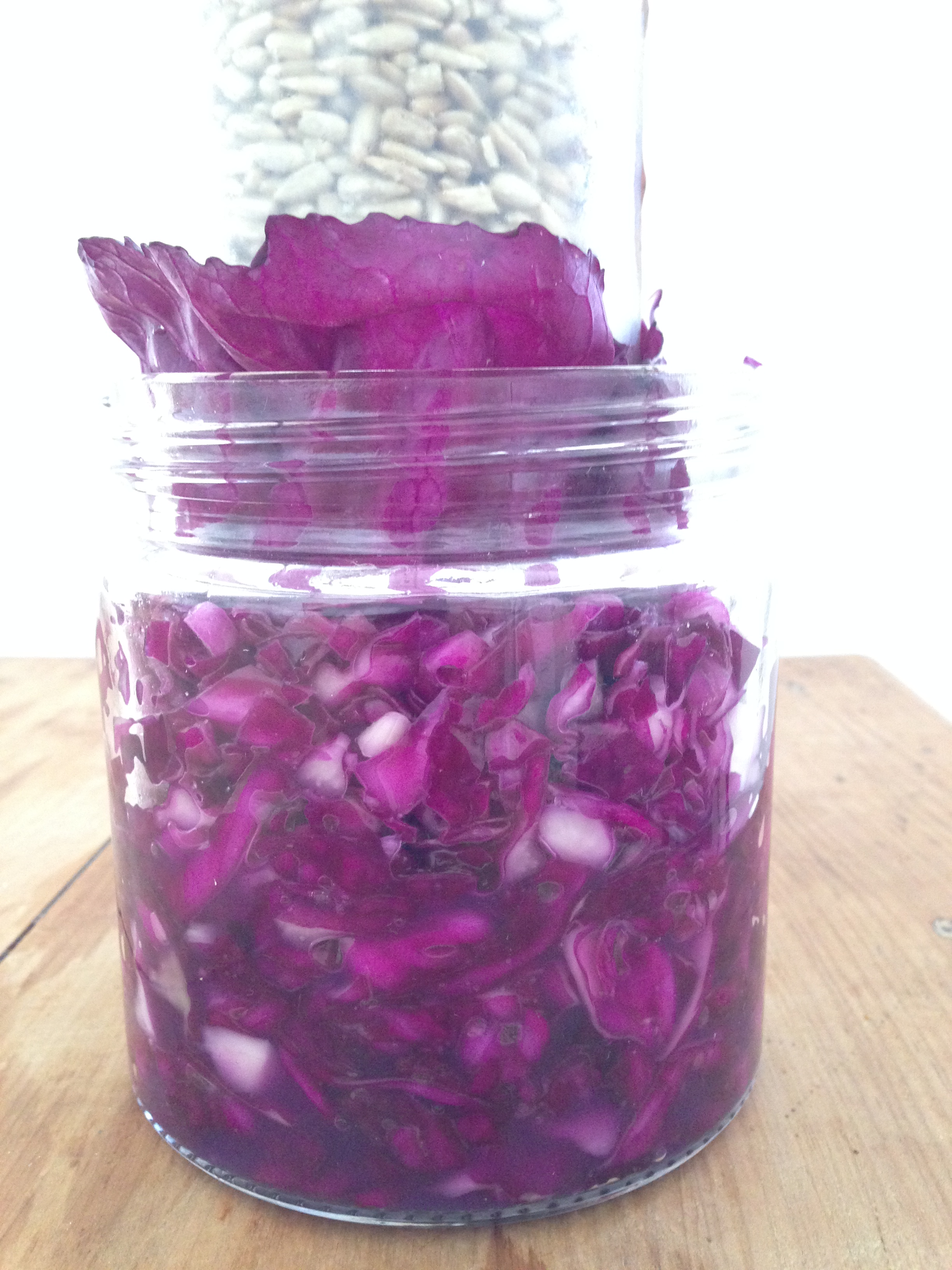 I made Saurkraut for the first time last week! And it’s delicious and nutritious. Living in another country can be challenging at times, especially on the digestive system! Not only because it can be difficult to find the foods you like and are used to, but also exposure to different food, bacteria and stress all cause changes to the intestinal microflora. That’s why I decided to make saurkraut! And it’s SO SO easy to make. Thanks to thekitchn.com, I was inspired!
I made Saurkraut for the first time last week! And it’s delicious and nutritious. Living in another country can be challenging at times, especially on the digestive system! Not only because it can be difficult to find the foods you like and are used to, but also exposure to different food, bacteria and stress all cause changes to the intestinal microflora. That’s why I decided to make saurkraut! And it’s SO SO easy to make. Thanks to thekitchn.com, I was inspired!
I also LOVE caraway seeds, so that was my challenge to find. It took a few weeks, but after asking around, I found something called ‘Kemmel’ that I was told was German cumin. It was in a closed package so I couldn’t smell it, but it looked similar, so I took the risk. I was happy to arrive home to taste it and I’m sure it’s caraway 🙂 It has definitely contributed a delicious flavour to my saurkraut!
Saurkraut Recipe: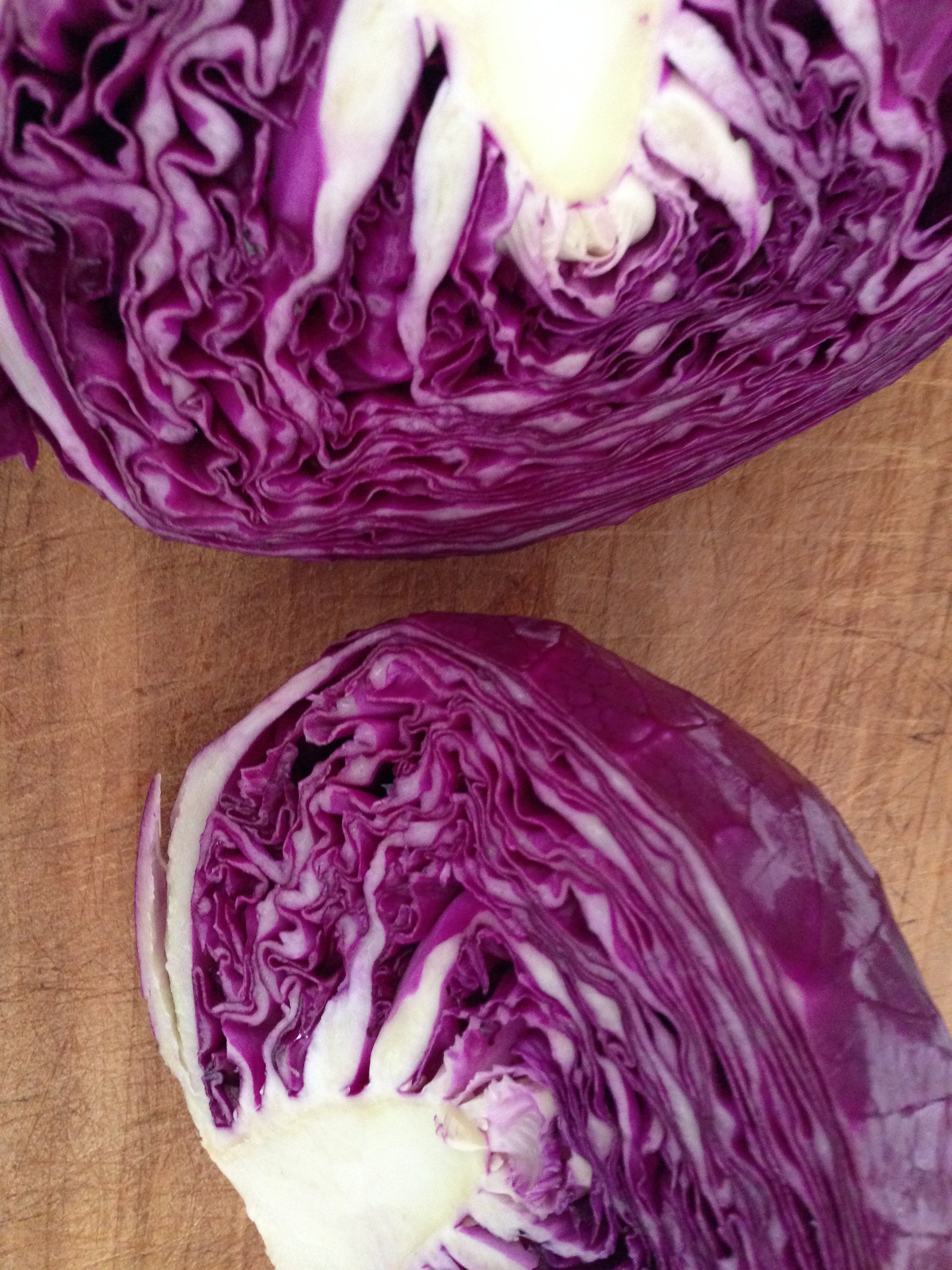
Ingredients:
- Medium head of Cabbage
- 1.5 Tbsp Sea Salt
- 1 Tbsp Caraway Seeds (optional)
Instructions: (simple version, more details at thekitchn.com)
- Discard wilted/limp outer leaves of cabbage. Cut into quarters and remove inner core. (slice each quarter in half making 8 wedges if desired), then slice each wedge into thin shreds.
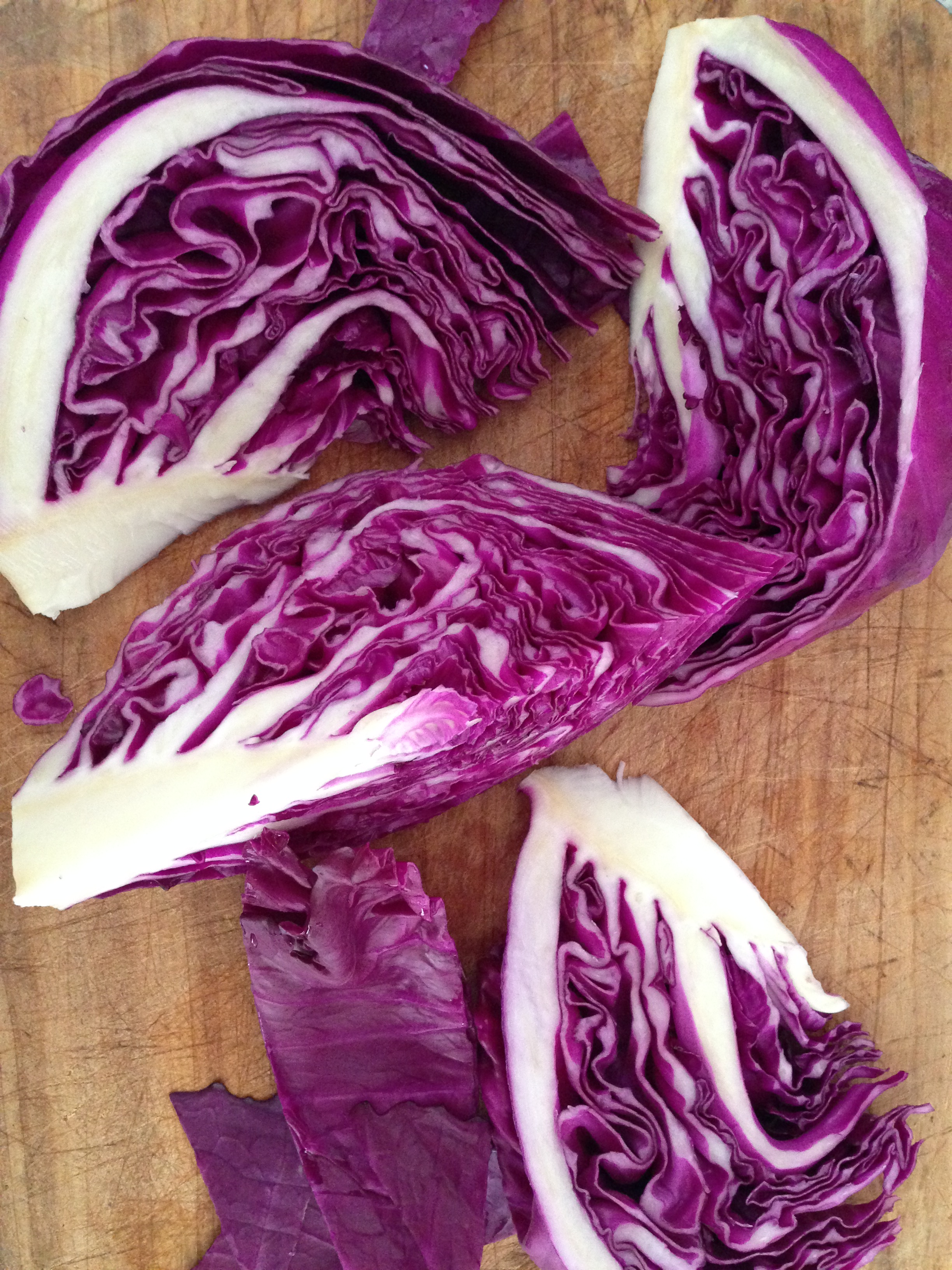
- Put cabbage shreds into big mixing bowl and sprinkle with salt. With your hands begin working the salt into the cabbage by massaging and squeezing. Gradually the cabbage will become watery and limp (about 5-10 min). Add caraway seeds for flavour if you would like.
- Pack cabbage into a wide-mouthed mason jar and add any remaining liquid from the bowl.
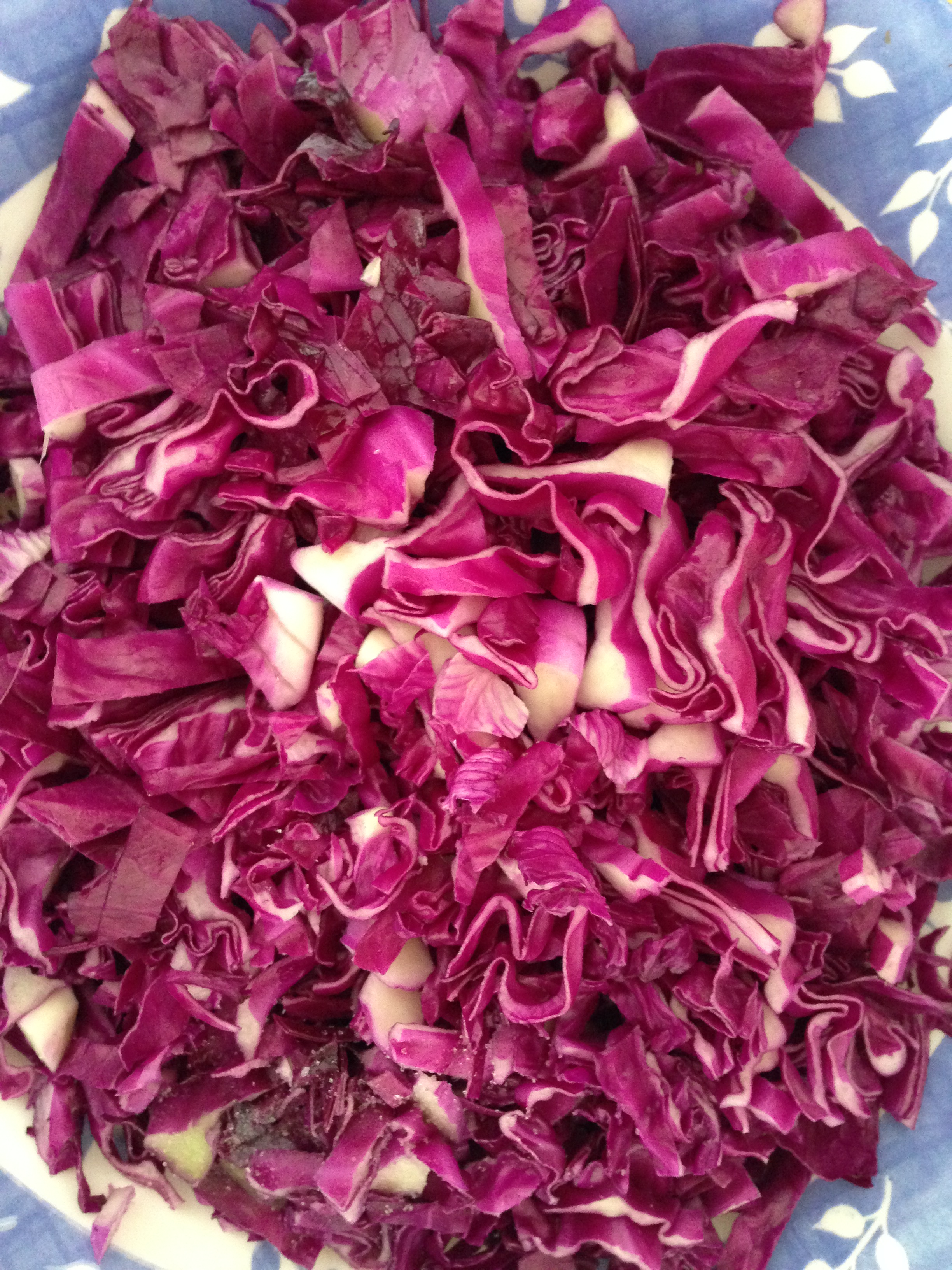
- Then place a wide glass or jelly jar that fits into the mouth of the mason jar to add weight and use to press cabbage down. (I used an outer leaf of cabbage to cover the shreds and pack down. You can also add stones or marbles to the glass/jelly jar to weigh it down even more)
- Cover both jars with a cloth and place an elastic band around to keep out dust and insects. Keep at room temperature away from direct sunlight (I just left it on the counter!)
- During the next 24 hours press down the cabbage every so often, this will squeeze out liquid so the cabbage can become completely submerged.
- Let ferment for about 3-10 days, checking every so often to see that it is submerged. Taste after 3 days to see if it’s to your liking. Once ready, put on the lid and store in the fridge. It will keep for a few months in the fridge.
Eat a small portion everyday to give you some healthy intestinal flora support!
Health Benefits of Saurkraut: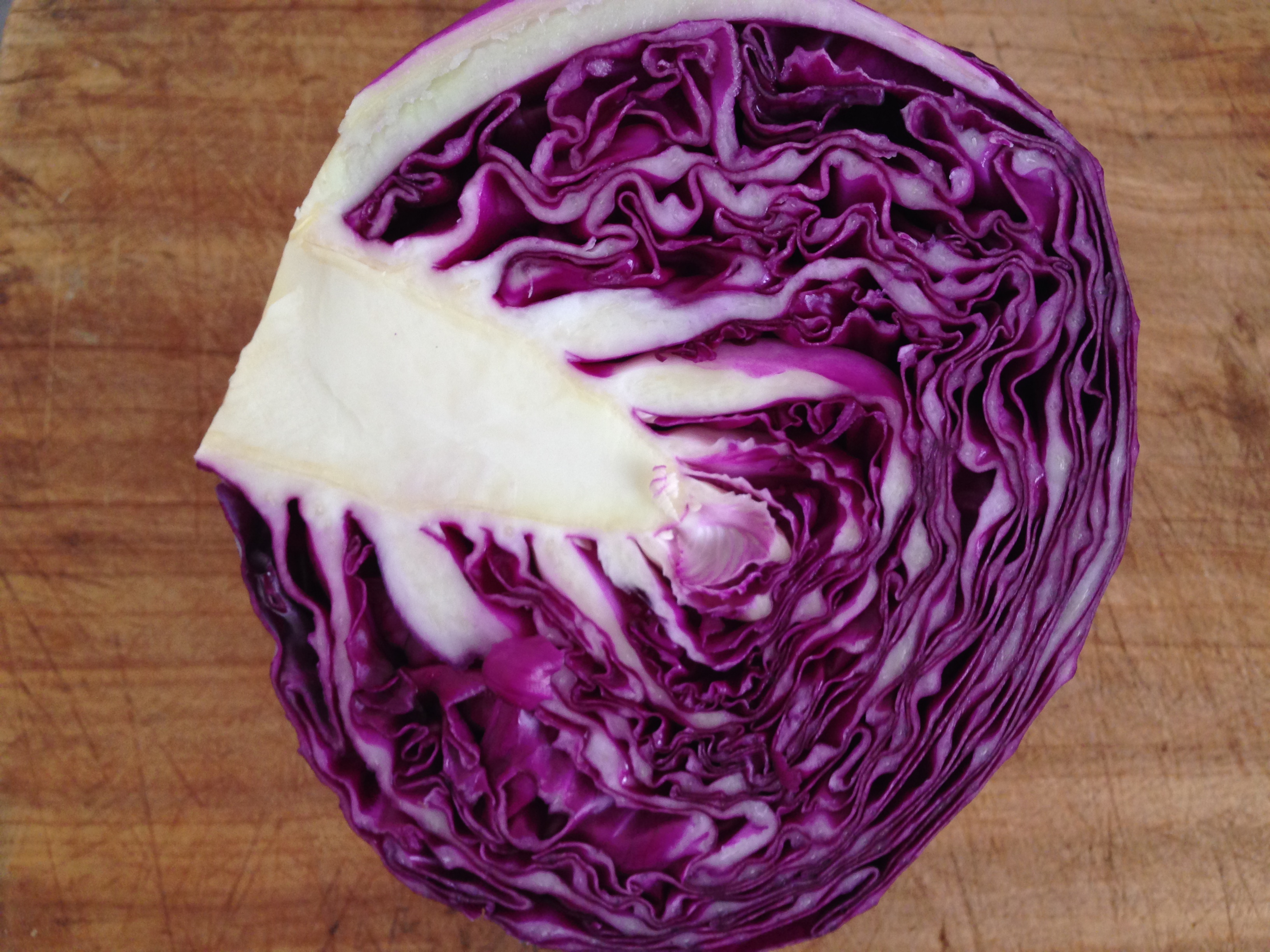
First of all, fermentation improves the bio-availability of nutrients. So saurkraut is not only easier to digest, but all the nutrients in cabbage become more accessible. This is truly a superfood!!
Improved Energy: there is a lot of iron in cabbage! Iron improves energy by increasing metabolism and boosting circulation, which improves oxygenation of organs and cells. Also prevents anemia.
Digestive Health: Cabbage is a great fibre source helping to move the bowels. Cabbage also has properties that help heal ulcers and prevent colon cancer. The fermentation process also provides healthy intestinal bacteria, that are important for digestion and absorption of nutrients. These healthy bacteria can be lost when we take antibiotics, experience stress, and eat unhealthy foods.
Immune System: A single serving of saurkraut provieds 35% of your daily requirement of vitamin C. Vitamin C supports white blood cell formation, increases cellular regeneration and repair, and plays a key role in the formation of collagen. The healthy bacteria provided in saurkraut also help to increase our intestinal flora, which in turn boosts and protects the immune system.
Heart Health: The fiber in cabbage is also protective to lower cholesterol and therefore protect the cardiovascular system.
Skin and Eye Health: Cabbage is full of carotenoids and provides a significant amount of vitamin A. These are antioxidants preventing free radical cellular damage. Vitamin A has been shown helpful to reduce risk of macular degeneration and cataracts. Vitamin A is also important for your skin, reducing blemishes, slowing down the appearance of wrinkles and providing a glowing complexion.
Anti-inflammation: Saurkraut also contains phytonutrients that act to decrease inflammation and therefore reduce pain and discomfort in joints and muscles.
Strong Bones: There is a huge variety of minerals in saurkraut which is excellent for strong bones. Cabbage also contains a high amount of vitamin K which is very important for the integrity and strength of bones, as vitamin K produces the proteins that remineralize the bones!
Cancer Prevention: As cabbage is part of the Brassica Family of vegetables, there are specific components (indol-3-carbinal and d-glucarate) in this group of vegetables that promote healthy estrogen metabolism. This means that it plays an important role in preventing hormone-related cancers.

